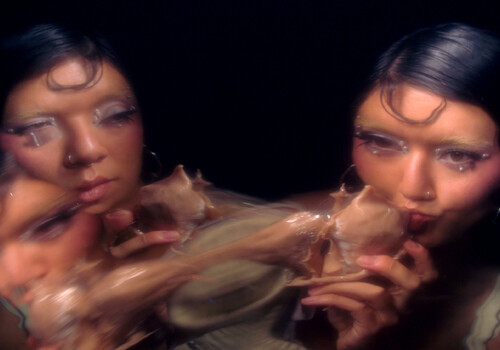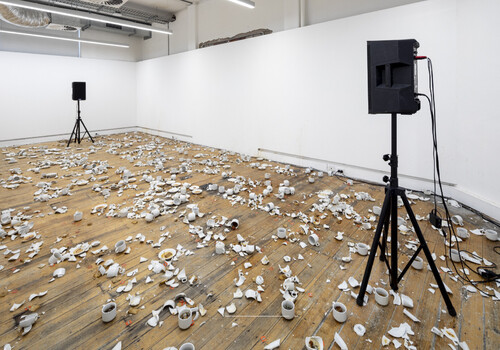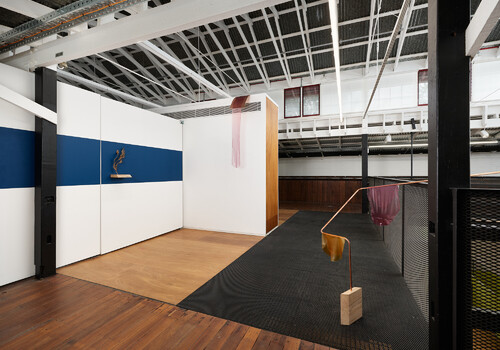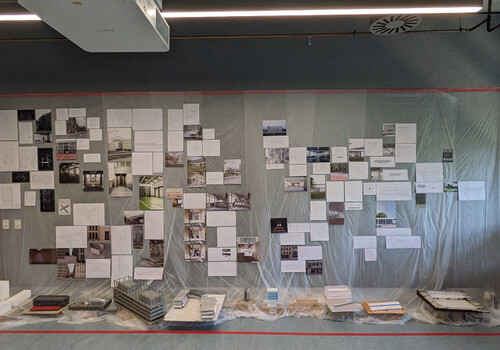Painting, Victorian College of the Arts
By Hugh Magnus
I think I’m turning into a tradcath. Not that I feel the urge (yet) to become a reactionary influencer or denounce the Pope on Twitter or anything. But wandering through the painting galleries of the VCA Grad Show, I feel gripped by a sense of mysticism that I can’t quite shake. Contemplating the work of Kit Johnston, Ginger Dymke, and Matt Benjamin offers a glimpse into what feels like some sort of post-intellectual, spiritual knowledge that feels positively revelatory.
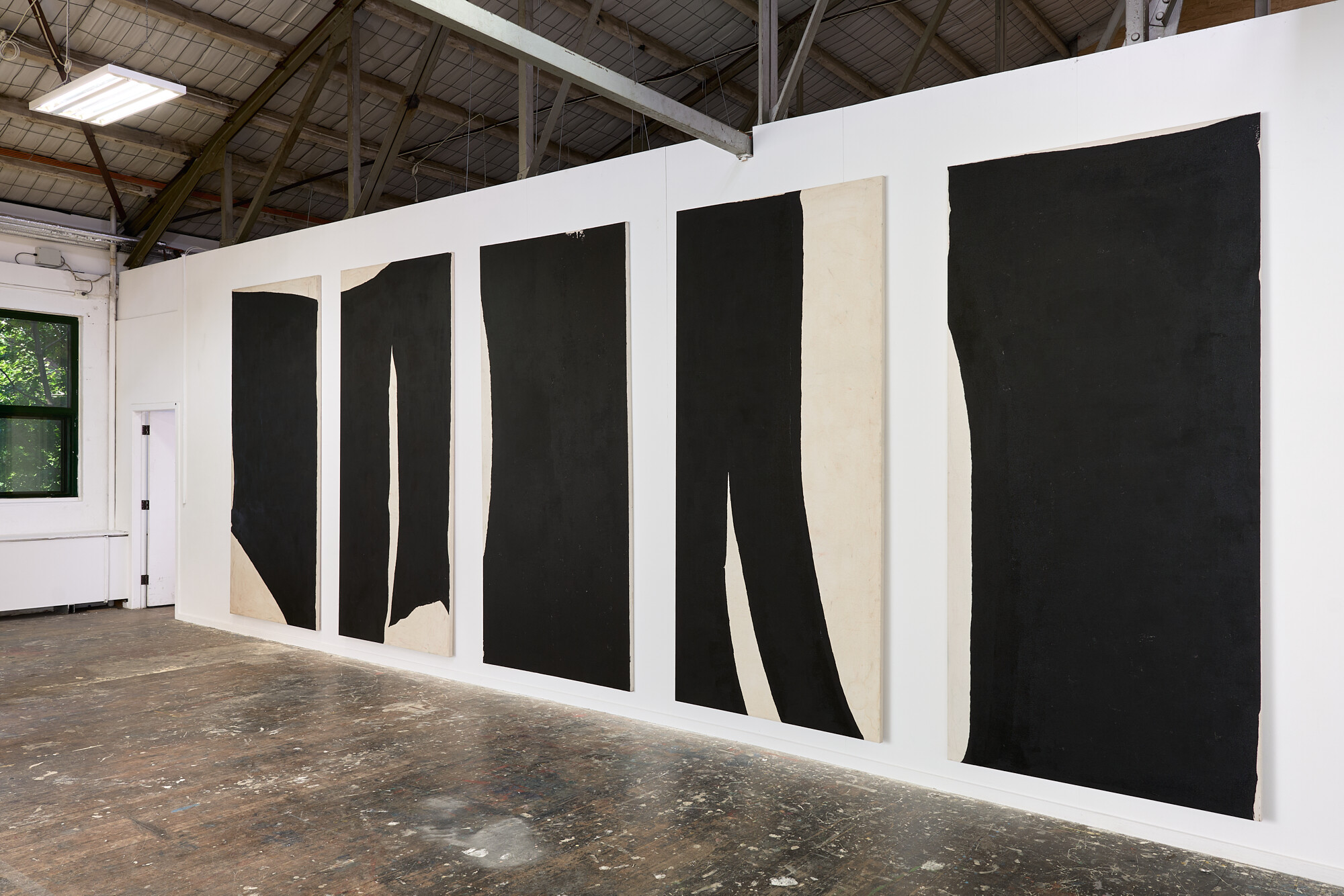
Kit Johnston, Untitled, 2024, tar, paint chippings, pencil shavings and bleach on canvas. Victorian College of the Arts, Melbourne. Photo: courtesy the University of Melbourne
At one end of the painting studios hang five monumental works on canvas. The sharp contrast of the curving blocks of black tar and the unprimed canvas in Kit Johnston’s Untitled 2024 creates a visually arresting scene. The darkness of the tar harnesses the light of the studios in a way that feels divine: the tradcath in me thinks of medieval stained glass evoking the symbolic light of God. Closer inspection reveals a faint, Twombly-esque touch of pastel pencil and paint, made from rubbing old studio scraps over the raw bleached canvas. The stark minimalism of the work reminds me of Barnett Newman’s Stations of the Cross (1958–66): bold and imposing but tantalisingly subtle.

Ginger Dymke, Like Water off a Bulldog’s Back, 2024, papier-mâché on nautical rope. Victorian College of the Arts, Melbourne. Photo: the author
Further down the studios-cum-gallery, Ginger Dymke’s Like Water off a Bulldog’s Back (2024) rests on the floor, a curving nest of nautical rope upon which the artist has papier-mâchéd newspaper. The lines of the sculptural piece draped over the gallery floor recall the carcass of a sea-beast, old bones hauled up onto the deck of a ship. At the same time, the tangle of rope feels like a neural network, coated by the oil-slick of the ever-present news cycle. This work grapples with time, a palimpsest of the fixed, static words of the paper over the connective tissue of the rope. Rope on the ground is a fairly banal sight in the nautical world; one wouldn’t look twice at a pile sitting on the dock. But in the motions of its concealment, the rope becomes rebirthed into a free-floating work untethered by hook or anchor. The almost votive rhythm of the papier-mâché process feels embodied in the sculpture’s sinuous gestures: a latter-day rosary almost better suited to a Genet character than a saint.
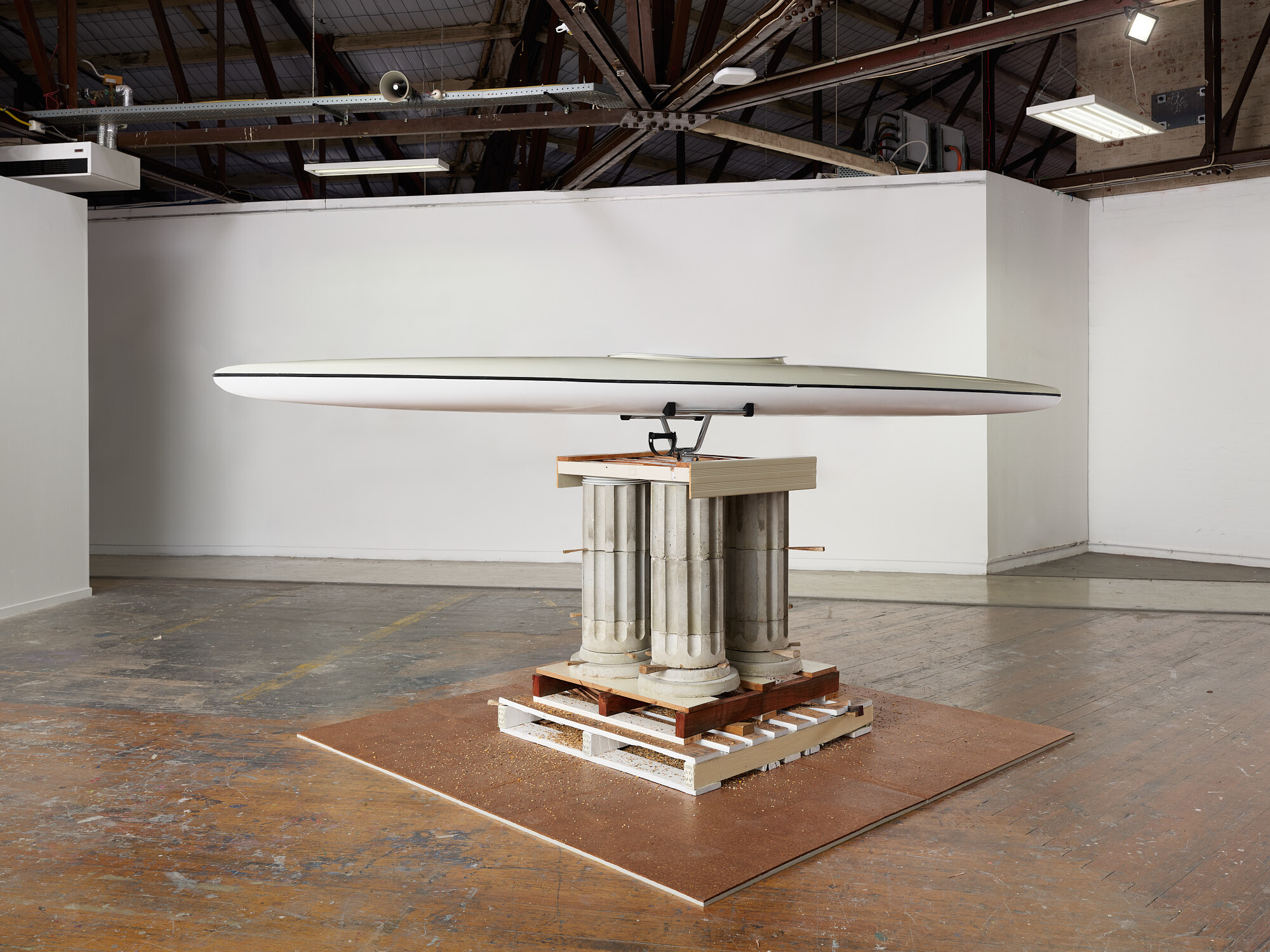
Matthew Benjamin, Pelican, 2024, automotive paint, exercise bike, dinner plates, concrete columns, wedges, found doorstops, deconstructed church pew, timber pallet, cork tiles, birdseed. Victorian College of the Arts, Melbourne. Photo: courtesy the University of Melbourne
A counterpoint to Dymke’s piece is found at the other end of the Painting galleries, in Matt Benjamin’s Pelican (2024). The sculptural work consists of a kayak perched on a motley tower made up of concrete Doric columns, plates, a deconstructed pew, cork, and birdseed. Despite the chaos of the bricolage—it feels a bit like a postmodern architect’s wet dream—I can’t help but read a devotional aspect in this work too. Like the titular pelican, Benjamin’s work is voracious in its consumption of cultural references, swallowing classical temples, churches, rites, and rituals whole. The result is a backyard altar or obelisk that, although crude in construction, feels imbued with a potency surpassing the sum of its parts.
Each monumental in scale and claim, each playing with the limits of their mediums, Johnston, Dymke and Benjamin’s works borrow from a curiously devotional mode in their creation. While not necessarily spiritual in their motives, each work has a mystic property beyond the limits of their expression. Maybe I’ll see you at Latin Mass next Sunday!
Hugh Magnus is a writer based in Narrm/Melbourne


